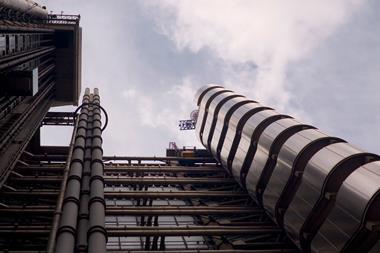Picture the scene. It's mid evening, on a quiet suburban road. Two (or more) vehicles collide very gently; they don't want anyone to get hurt. Then it's home for a nice cup of cocoa and to write up the paperwork. Not a bad way to “earn” £20,000 – more pipe and slippers than the Godfather, but no less effective. No wonder motor insurance fraud is on the increase, as organised gangs pocket an estimated £250m each year – an average of £10 on the premium of every vehicle in the UK.
What makes this type of fraud more attractive is that there is no risk – nobody gets hurt and virtually nobody gets prosecuted, even when they are caught. Insurers are generally happy just for the claim to go away. They don't have the resources to follow through to prosecution. Consequently the perpetrators live to try again another day – new insurer, different car, same cup of cocoa afterwards.
Glaring indicators
To make matters worse, successful fraud – by definition – goes unnoticed. Even glaring indicators are overlooked by overworked claims departments with customer satisfaction as their number one objective. But there are certain indicators that can help identify a potential fraud case in the first instance.
Probably the most important organised fraud indicators are the connections between the claimant and the defendant. Although difficult to spot from a claim form, connections are the aspects of fraud that hold it all together and make it work. Common connections are family relations; a brother-in-law having an accident with a cousin is not unusual these cases. But to get to this point in the investigation other indicators will need to stand out first to raise suspicions.
Take for example a policyholder with comprehensive insurance on a low-value vehicle. The annual premium could well cost more than the vehicle itself, so more often than not in a fraud case the preferred method of payment is by instalments. When you are dealing with a caseload of 500 this indicator is hard to spot.
Throw another factor into the equation: everyone in the car was injured, but nobody reported it to the police or went to seek immediate, medical advice. The pieces start to fall into place. When everyone in a vehicle is injured and it is not reported you can usually expect to find some areas for concern.
Watch out, for example, for the claims form that reads: “The third-party vehicle hit my vehicle on the front offside and I sustained a standard whiplash.” The claims language is often a give-away. A common trait of the fraudster is to use technical insurance terms the average person would not know. Nice of them to do their bit to speed up a claim.
Watch out for accidents late at night or early in the morning. It is easier to stage an accident when no one is around as an independent witness. Claims staff should be especially wary of claims that occur at 9.45pm as this is the time when traffic police in many areas change shift. The fraudsters know it, and plan their campaign accordingly.
Another trick is using mobile phone numbers and unusual addresses. This makes it difficult to trace personal details to help establish the connections between the fraudsters.
A ready admission of liability is also a give- away signal. When asking who is to blame for the accident, claims staff should get worried when they hear “unfortunately myself”. The average motorist is not keen to say it is their fault. In fact they will probably give you a hundred reasons why they are to blame.
Not victimless
In appropriate circumstances, further checks should be made. If one of the vehicles had risen from the ashes, then you have moved away from the bumbling oppprtunist into the territory of the organised criminal. “Bump Bump Theft” is the term applied to the standard procedure of these gangs. This is a whole different arena with garages and hire companies involved. The stakes are high and knowledge of the players and the system is imperative.
Finally, as insurance companies head down the path of the paperless office, fraud will become harder to identify. In small claims and fast-track cases (ie the vast majority of motor claims in this country) there are restrictions on evidence. Indeed it will not be long before many of these cases are decided simply on the basis of the paperwork involved. This makes it more important to be able to spot a fraud claim the moment it lands on the desk of a claims handler.
Organised fraud is a crime and it is not victimless. The general public pays the price in premiums and the insurance industry's reputation is damaged. Unchecked, the organised fraudster will repeat their crime because there is big money at stake. The answer lies in more criminal prosecutions. If the police are unwilling to prosecute, companies can run a private prosecution. For all the difficulties this entails, it sends a clear message to the fraudsters that the industry is no longer prepared to pay.
Hosted by comedian and actor Tom Allen, 34 Gold, 23 Silver and 22 Bronze awards were handed out across an amazing 34 categories recognising brilliance and innovation right across the breadth of UK general insurance.











































